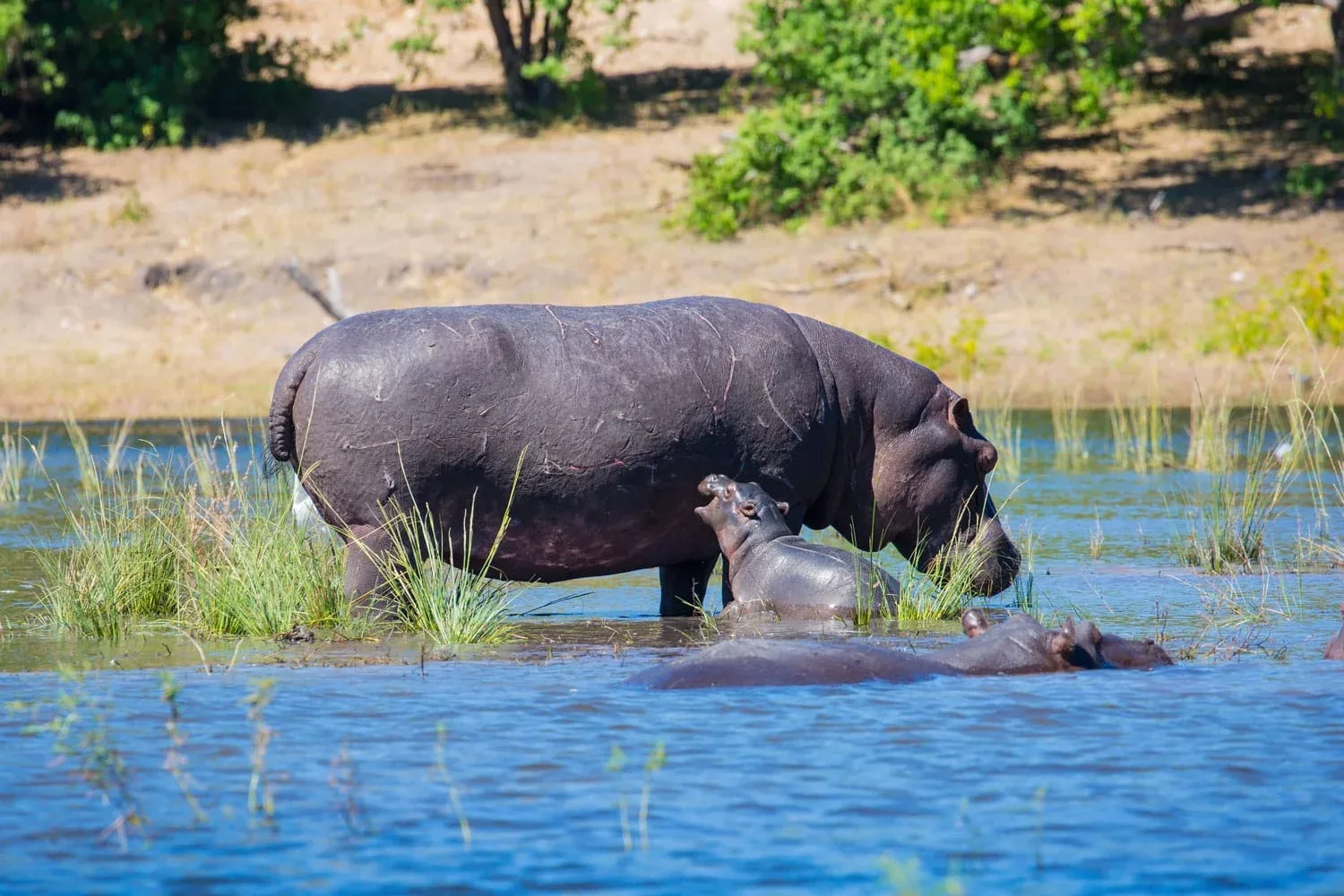
Call Us For Help!
+254 713 380 337
Address
Mombasa Rd., Pacific Crest Mall, 3rd Floor, RM 23
Mail Us
info@exodussafaris.com
- Safaris & tours
TOP DESTINATIONS
- Destinations
- Experiences
- About Us
- Blog
+254 713 380 337
Mombasa Rd., Pacific Crest Mall, 3rd Floor, RM 23
info@exodussafaris.com
Exodus Safaris welcomes you to experience the iconic Masai Mara Safaris, an adventure that encapsulates the essence of Africa’s wildlife and landscapes. Situated in southwestern Kenya, the Masai Mara National Reserve is renowned for its vast savannahs, rolling hills, and abundant wildlife, including the legendary Big Five – lions, elephants, buffaloes, leopards, and rhinoceroses. Committed to providing memorable and responsible tourism experiences, Masai Mara Safaris curated by Exodus Safaris offer travelers an immersive journey into one of Africa’s most spectacular safari destinations.
Undertaking Masai Mara Safari with Exodus Safaris promises unparalleled wildlife sightings and awe-inspiring landscapes. Led by experienced guides with extensive knowledge of the reserve, participants embark on game drives, hot air balloon safaris, and cultural interactions with the Maasai people, offering intimate encounters with Africa’s most iconic species and diverse ecosystems.
From witnessing the Great Migration, where millions of wildebeests and zebras traverse the Mara River, to enjoying breathtaking sunsets over the savannah, Masai Mara Safaris provide travelers with unforgettable moments and lasting memories in one of Africa’s most celebrated wildlife reserves. With comfortable accommodations and personalized service, Masai Mara Safaris with Exodus Safaris offer an authentic and enriching safari experience that celebrates the wonders of the Masai Mara National Reserve.
Morning and evening game drives are the quintessential safari experience, offering prime opportunities to observe wildlife in action. With knowledgeable guides at the helm, you’ll have expert assistance in spotting the Big Five and other fascinating wildlife species during these optimal times of day.
Aerial Views: Experience the reserve from a hot air balloon for a unique perspective. Floating over the savannah during sunrise provides breathtaking views of the landscape and wildlife below. Marvel at the expansive vistas of Marojejy’s lush rainforests, rugged mountains, and winding rivers, all from a serene and elevated vantage point. This unforgettable experience offers a bird’s-eye view of Madagascar’s natural beauty, allowing you to appreciate the diversity and grandeur of Marojejy National Park in a truly immersive way.
Take a guided nature walk with a knowledgeable naturalist in Maasai Mara. This allows you to experience the smaller details of the ecosystem, such as animal tracks, plants, and insects, up close. Discover the intricate web of life that thrives in Maasai Mara as your guide points out hidden treasures like rare orchids, colorful birds, and endemic wildlife species. These intimate explorations provide a deeper appreciation for the reserve’s biodiversity and ecological interactions, offering insights into the delicate balance that sustains this iconic African ecosystem.

Visiting nearby villages near Marojejy National Park offers a rich cultural experience. Engage in interactions with local communities to learn about their traditions, daily life, and the significance of their cultural practices. Witness traditional dances, observe artisans creating handmade crafts, and immerse yourself in the warm hospitality of the Malagasy people. These experiences provide a deeper connection to the region’s cultural heritage and offer insights into how communities coexist harmoniously with the natural environment surrounding Marojejy.
If you are passionate about wildlife photography, consider joining specialized photography safaris led by experienced photographers. These workshops offer valuable tips and techniques for capturing stunning wildlife shots in Marojejy National Park. Learn how to optimize your camera settings, frame your subjects effectively, and utilize natural lighting to enhance your photographs. With guidance from seasoned photographers, you’ll have the opportunity to hone your skills while exploring one of Madagascar’s most biodiverse ecosystems. Whether you’re aiming to capture the vibrant plumage of endemic birds or the expressive faces of lemurs, these workshops ensure you can document the park’s natural wonders with precision and artistry.
Masai Mara is a paradise for birdwatchers. With over 450 bird species, including eagles, vultures, and ostriches, bird enthusiasts can have a field day capturing these magnificent creatures. Whether you’re drawn to the majestic flight of raptors soaring overhead or the colorful plumage of smaller songbirds, Masai Mara offers unparalleled opportunities for avid birdwatchers to observe and photograph a diverse array of avian species in their natural habitat.
The Masai Mara offers a range of accommodations from luxury lodges to comfortable tented camps. After a day of safari adventures, unwind and immerse yourself in the breathtaking views and the serene sounds of the African wilderness. Whether you prefer the elegance of a luxury lodge with modern amenities or the intimate ambiance of a tented camp under the starlit sky, each accommodation option ensures a memorable and rejuvenating experience amidst the natural beauty of the Masai Mara.
In some private conservancies adjacent to the Masai Mara Reserve, night game drives are permitted. This allows you to observe nocturnal animals, such as leopards and hyenas, in their natural habitat. Experience the thrill of spotting these elusive creatures as they emerge under the cover of darkness, guided by expert rangers who illuminate their behaviors and interactions. This unique safari experience offers a rare opportunity to witness the Maasai Mara’s wildlife in a different light, enhancing your understanding and appreciation of its diverse ecosystem.
Some lodges and conservancies in the Masai Mara organize talks and presentations about conservation efforts and the challenges faced in preserving the ecosystem. Engage in these discussions to gain deeper insights into local conservation initiatives. Learn about the efforts to protect wildlife habitats, combat poaching, and promote sustainable tourism practices that benefit both wildlife and local communities. These talks provide an opportunity to contribute to conservation efforts and understand the importance of preserving the natural heritage of the Masai Mara for future generations.


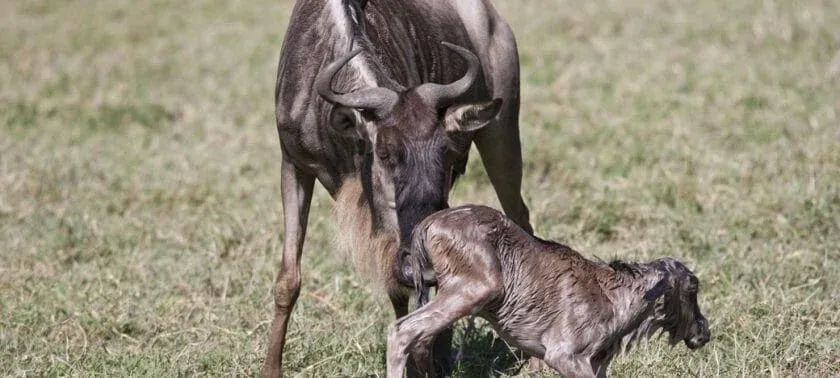
flora and fauna.
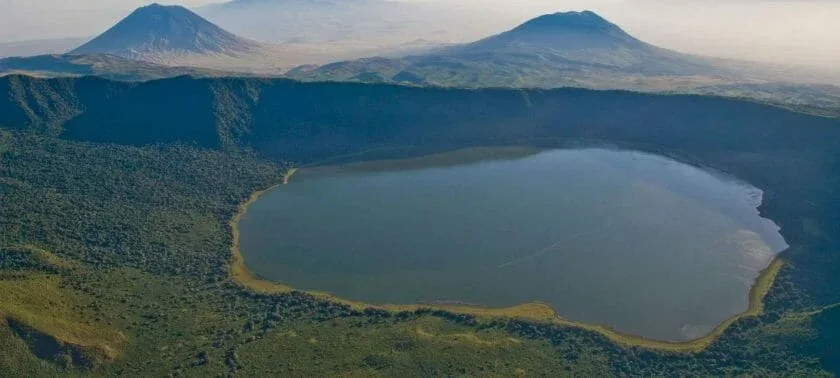

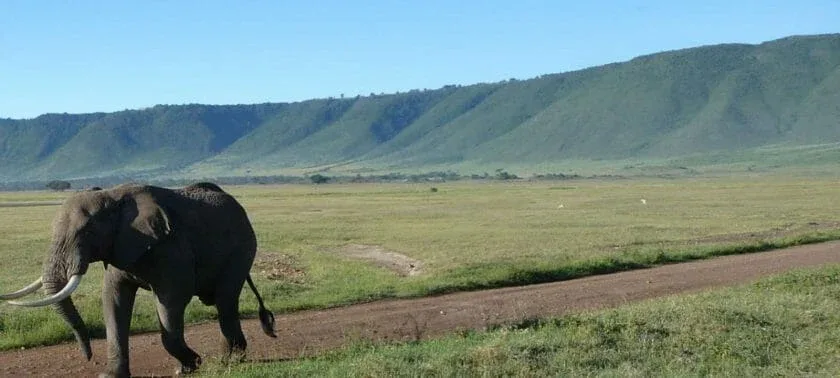

Birding Safaris in Africa
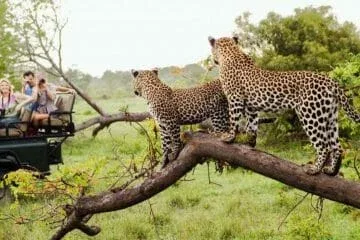
Big Five Safaris in Africa
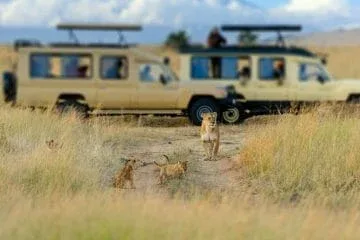
The Great Migration is a massive movement of wildebeest, zebras, and other animals between Serengeti National Park in Tanzania and Masai Mara in Kenya. It typically occurs between July and October, with millions of animals crossing the Mara River, offering a spectacular wildlife spectacle.
Masai Mara is home to a diverse range of wildlife, including the Big Five (lion, elephant, buffalo, leopard, and rhinoceros), cheetahs, giraffes, hippos, crocodiles, various antelope species, and numerous bird species.
Masai Mara offers traditional game drives, hot air balloon safaris providing an aerial view of the wildlife, guided bush walks, night drives for nocturnal animal sightings, and cultural visits to local Masai villages.
Yes, it is generally safe to go on a safari in Masai Mara. However, it's important to follow the guidelines provided by your safari guide and the park authorities to ensure your safety and the safety of the wildlife.
Essential items to pack include lightweight and breathable clothing, a hat, sunglasses, sunscreen, insect repellent, sturdy walking shoes, a good camera with zoom lens for photography, binoculars, and a small backpack. It's also advisable to carry a light jacket for early mornings and evenings when it can get cooler.
Yes, Masai Mara is one of the best places in Africa to see the Big Five. Lions, elephants, buffaloes, leopards, and rhinoceros are all present in the reserve, providing excellent opportunities for sightings.

Game drives are the most traditional way to explore the reserve. You can choose between morning, afternoon, or full-day drives. Conducted in safari vehicles with experienced guides, these drives offer opportunities to spot wildlife and gain insights into their behaviors. Guides share their knowledge about the animals’ habitats, movements, and conservation status, enhancing your safari experience. Whether you’re tracking the iconic Big Five or observing migratory birds, each game drive in the Masai Mara promises thrilling encounters and memorable moments amidst Kenya’s renowned wilderness.
Hot air balloon safaris offer a unique perspective of the Masai Mara. Glide above the savannah, enjoying a bird’s-eye view of the wildlife below. This serene experience often includes a champagne breakfast upon landing, making it a memorable way to start your day in the African wilderness. Observe herds of elephants, giraffes, and wildebeests from a tranquil altitude, guided by experienced pilots who provide insights into the landscape and wildlife behavior. A hot air balloon safari in the Masai Mara promises breathtaking views and unparalleled opportunities for wildlife photography, creating lasting memories of Kenya’s iconic landscape.
Walking safaris provide an intimate experience with nature in the Masai Mara. Accompanied by armed guides for safety, you can explore the reserve on foot, immersing yourself in the sights, sounds, and scents of the African wilderness. Learn about animal tracks, plants, and the smaller wildlife that is often missed during game drives, gaining a deeper appreciation for the ecosystem’s intricacies. These guided walks offer opportunities to observe birds, insects, and elusive mammals up close, while guides share their knowledge about local flora, fauna, and conservation efforts. Walking safaris in the Masai Mara offer a unique perspective and a more personal connection to Kenya’s rich biodiversity and natural heritage.
Masai Mara offers more than just wildlife; it’s also an opportunity to immerse yourself in the local Maasai culture. Cultural safaris involve visiting Maasai villages, where you can interact with tribespeople, learn about their traditions, participate in traditional dances, and gain insights into their way of life. Engage in activities such as beadwork demonstrations, cattle herding, and storytelling sessions that highlight the Maasai’s rich cultural heritage. These experiences foster a deeper understanding of the community’s customs, resilience, and deep connection to the land. Cultural safaris in the Masai Mara provide a meaningful cultural exchange that enhances your safari adventure and supports local communities.

For photography enthusiasts visiting the Masai Mara, specialized photographic safaris are available. These tours are led by professional wildlife photographers who provide expert guidance on capturing the perfect shot. They share techniques for wildlife photography, including composition, lighting, and camera settings tailored to the African bush. Some tours even offer customized safari vehicles equipped with camera mounts and elevated platforms, ensuring optimal angles for photography without disturbing the wildlife. Whether you’re aiming to capture the intense gaze of a lioness or the graceful stride of a cheetah, these photographic safaris in the Masai Mara provide unparalleled opportunities to hone your skills and create stunning images of Kenya’s iconic wildlife and landscapes.

Family-friendly safaris in the Masai Mara include activities tailored for children, ensuring that both adults and youngsters have an enjoyable and educational experience. Engage in educational nature walks where kids can learn about animal tracks, plants, and the smaller wildlife of the reserve. Participate in junior ranger programs designed to teach conservation principles and wildlife identification through interactive games and activities. Additionally, storytelling sessions around the campfire provide cultural insights and entertainment for the whole family. These family safaris foster a deeper appreciation for nature and wildlife while creating lasting memories of shared adventures in Kenya’s breathtaking wilderness.

The Masai Mara is home to a wide variety of bird species, making it a prime destination for birdwatching safaris. These excursions focus on spotting and identifying different bird species found in the region. Knowledgeable guides, well-versed in ornithology, assist bird enthusiasts in locating rare and beautiful birds, providing insights into their behaviors and habitats. From colorful kingfishers and majestic eagles to migratory species and endemic birds of prey, the Masai Mara offers abundant opportunities for avid birdwatchers to observe and photograph diverse avian life against the backdrop of Kenya’s scenic landscapes.

Horseback safaris provide a unique and adventurous way to explore the Masai Mara reserve. Accompanied by experienced guides, you can ride horses through the wilderness, allowing you to get closer to wildlife while enjoying the thrill of horseback riding. This immersive experience offers a different perspective of the savannah, enabling you to observe animals in a more natural and intimate setting. Whether you’re trotting past herds of zebras or cantering alongside giraffes, horseback safaris in the Masai Mara combine the excitement of wildlife encounters with the joy of horse riding, creating unforgettable memories of Kenya’s iconic landscape.

If you prefer more independence, you can opt for a self-drive safari in the Masai Mara. Rent a 4×4 vehicle and explore the reserve at your own pace, allowing flexibility in your wildlife viewing adventures. However, it’s crucial to adhere strictly to park rules and safety guidelines to ensure both your safety and the preservation of the reserve’s natural environment. Familiarize yourself with the designated routes, wildlife viewing etiquette, and regulations concerning interactions with wildlife. With proper preparation and respect for the wilderness, a self-drive safari offers an exciting and personalized way to experience the diverse landscapes and wildlife of the Masai Mara in Kenya.

Location: Masai Mara National Reserve is located in southwestern Kenya, adjacent to the Tanzanian border. It forms part of the larger Mara-Serengeti ecosystem, renowned for its annual wildebeest migration. The reserve’s strategic position along the Great Rift Valley offers spectacular views and diverse habitats, supporting a rich array of wildlife, including the Big Five and numerous bird species.
Size: The reserve covers approximately 1,510 square kilometers (580 square miles) of savannah, grassland, and forest along the Great Rift Valley. Its expansive size and diverse ecosystems provide habitat for a wide range of wildlife, from iconic mammals like lions and elephants to rare bird species such as the secretary bird and martial eagle. The Mara River flows through the reserve, adding to its ecological richness and serving as a lifeline during the dry season for resident and migratory species alike.
Big Five: Masai Mara is home to the Big Five: lions, elephants, buffaloes, leopards, and rhinoceros. These iconic species attract wildlife enthusiasts from around the world seeking to observe these majestic animals in their natural habitat.
Other Wildlife: In addition to the Big Five, the reserve boasts a diverse array of wildlife, including cheetahs, giraffes, zebras, hippos, crocodiles, various antelope species such as impalas and gazelles, and over 450 bird species. This rich biodiversity ensures that every safari in the Masai Mara offers opportunities to encounter a wide range of fascinating wildlife species amidst the stunning landscapes of Kenya’s premier safari destination.
Masai Mara is famous for the annual Great Migration, where millions of wildebeest, zebras, and other animals migrate from Serengeti National Park in Tanzania to Masai Mara in search of fresh grazing land. This awe-inspiring natural spectacle typically occurs from July to October, attracting visitors from around the globe to witness the dramatic river crossings and mass movement of wildlife across the Mara River. The Mara-Serengeti ecosystem provides a critical habitat for this migratory phenomenon, showcasing the interconnectedness and resilience of nature in East Africa.
Peak Season: The best time for wildlife viewing, including the Great Migration, is during the dry season from June to October. During this period, the sparse vegetation and concentration of animals around water sources make for excellent game viewing opportunities.
Shoulder Seasons: March to May and November to December offer more affordable rates and fewer crowds. However, the weather can be less predictable during these periods, with occasional rainfall and greener landscapes. Despite the variability, these seasons provide quieter safaris and unique opportunities to witness the rejuvenation of the savannah after the rains, along with special migratory bird sightings.
Lodges: Various lodges in Masai Mara offer comfortable accommodations ranging from budget-friendly to luxury options. These lodges provide amenities such as restaurants, swimming pools, and guided safari tours, catering to different preferences and budgets.
Tented Camps: Tented camps provide a more immersive experience in the Masai Mara, allowing guests to be closer to nature while still enjoying essential comforts. These camps often feature spacious tents with en-suite facilities, offering a blend of adventure and relaxation amidst the wilderness.
Campsites: For those seeking a more rustic experience, both public and private campsites are available in Masai Mara. These campsites provide basic facilities such as shared bathrooms and cooking areas, ideal for travelers looking to immerse themselves fully in the natural environment and enjoy starlit nights under the African sky.

Masai Mara National Reserve is actively engaged in various conservation initiatives aimed at preserving its rich biodiversity. These efforts include rigorous anti-poaching measures to protect iconic species like elephants and rhinoceroses from illegal wildlife trade. Additionally, the reserve supports community-based projects that promote sustainable livelihoods and eco-friendly practices among local communities. By fostering partnerships with neighboring communities, Masai Mara National Reserve aims to safeguard its natural heritage while ensuring that conservation efforts benefit both wildlife and people.

Permits and Fees: Visitors to Masai Mara National Reserve are required to pay entry fees and obtain permits, with rates varying for residents, non-residents, and children. These fees contribute to conservation efforts and maintenance of the reserve’s infrastructure, ensuring sustainable tourism practices.
Guided Tours: It’s highly recommended to explore the reserve with a certified guide who possesses in-depth knowledge of the wildlife and adheres to park regulations. Experienced guides enhance the safari experience by providing insights into animal behavior, ensuring safe and respectful wildlife encounters.
Responsible Tourism: Practice responsible tourism during your visit by respecting wildlife and the environment. Avoid disturbing animals and adhere to guidelines provided by your guide, such as maintaining a safe distance from wildlife and staying on designated trails. By minimizing your impact on the ecosystem, you contribute to the preservation of Masai Mara’s natural beauty and biodiversity for future generations to enjoy.
